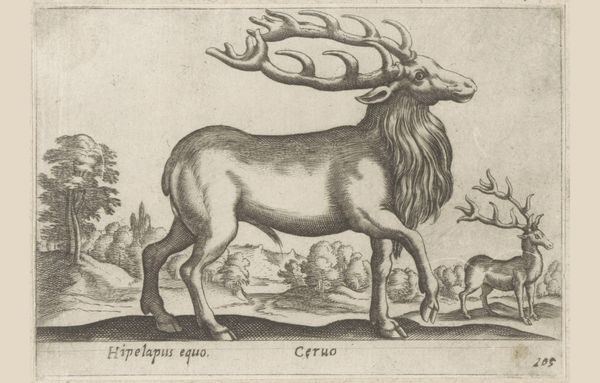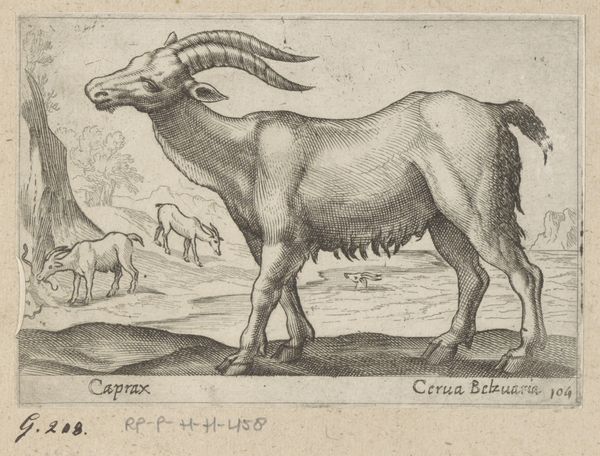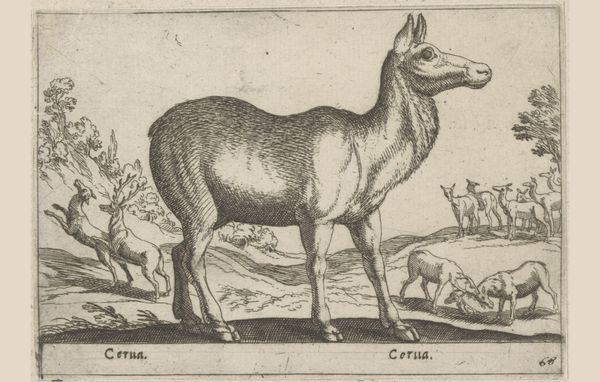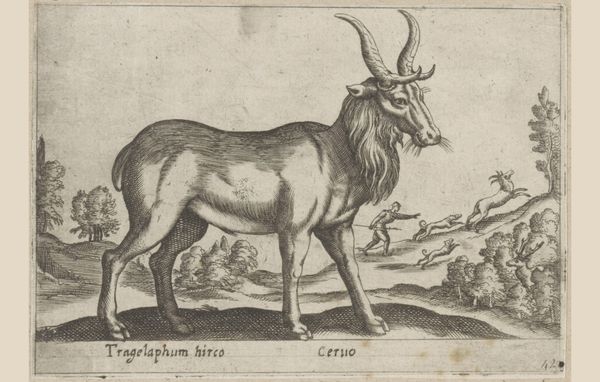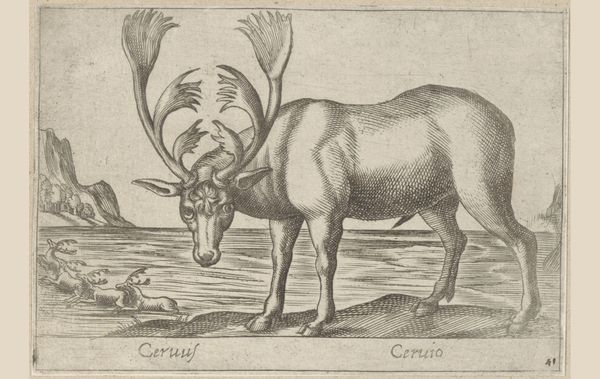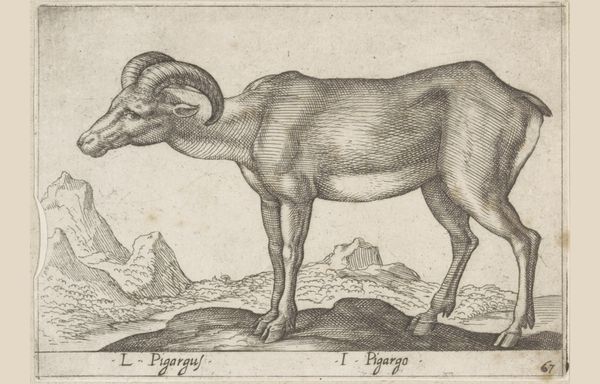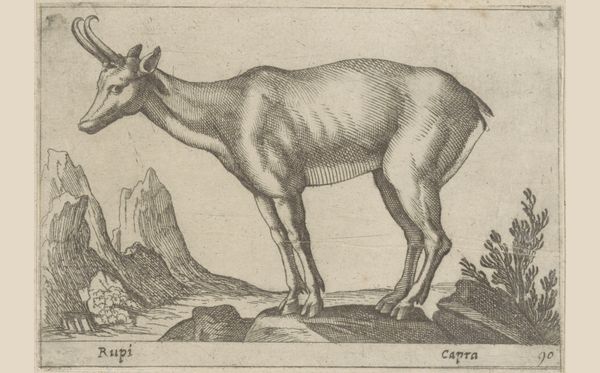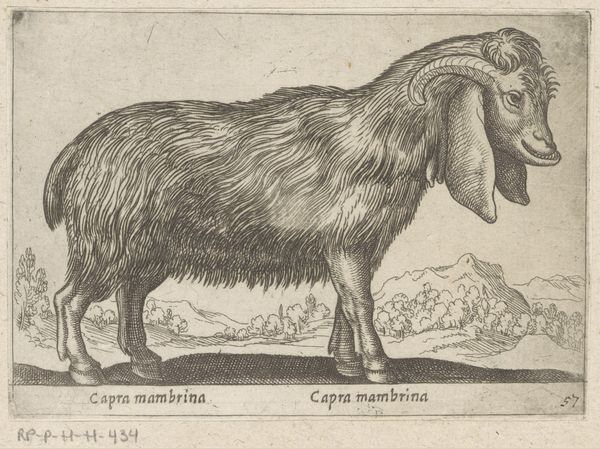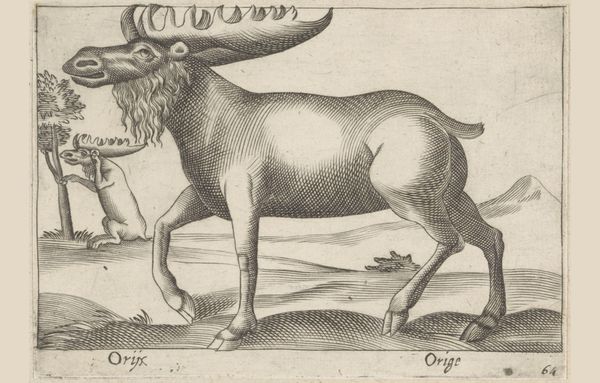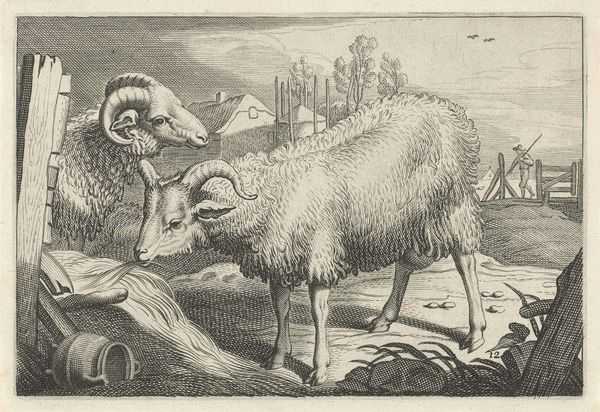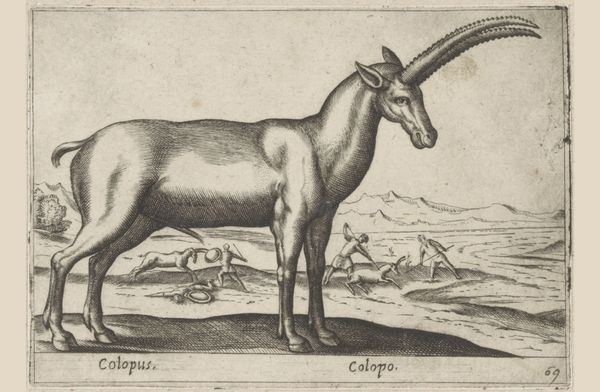
print, engraving
#
baroque
#
animal
# print
#
old engraving style
#
landscape
#
figuration
#
history-painting
#
engraving
Dimensions: height 95 mm, width 137 mm
Copyright: Rijks Museum: Open Domain
Curator: Welcome! Before us we have Antonio Tempesta's "Gems," an engraving created before 1650 and held here at the Rijksmuseum. Editor: It has an otherworldly quality. The lone animal seems grand but vulnerable within this barren landscape; I think it must represent an archetype. Curator: Quite possibly. Tempesta was masterful at conveying drama and movement. His technique, those dense, almost frenetic lines, capture a remarkable energy in what would otherwise be a straightforward study of an animal, likely a ram if the prominent horns are anything to go by. The use of engraving lends the image a striking graphic clarity. Editor: Definitely! The landscape too seems crucial—the tiny herd in the background suggests a wild expanse that mirrors the vast inner landscape of dreams. The animal looms with significance as a potent emblem of strength, leadership... perhaps even sacrifice. Do you think there is something to that? Curator: The visual language of animals as symbols extends back into antiquity. The ram is definitely an icon rich in associations; virility, determination. Tempesta and his contemporaries would have likely understood this shared symbolism deeply. It becomes a dialogue across centuries, then! Editor: A symbolic vocabulary instantly accessible, which also brings us back to archetypes—these primordial forms recognized by the subconscious. Looking at it makes me ponder the enduring power of ancient mythologies, how these narratives imprint on our imagination even now. Curator: The enduring human need to find meaning in our world, a projection onto nature itself! And to do it via artistic expression that speaks without the need for language. Editor: It shows me how images connect us to something immense and old in our history. It’s an enduring thread to hold onto in this cacophonous era. Curator: Yes! A quiet nod through the ages.
Comments
No comments
Be the first to comment and join the conversation on the ultimate creative platform.
